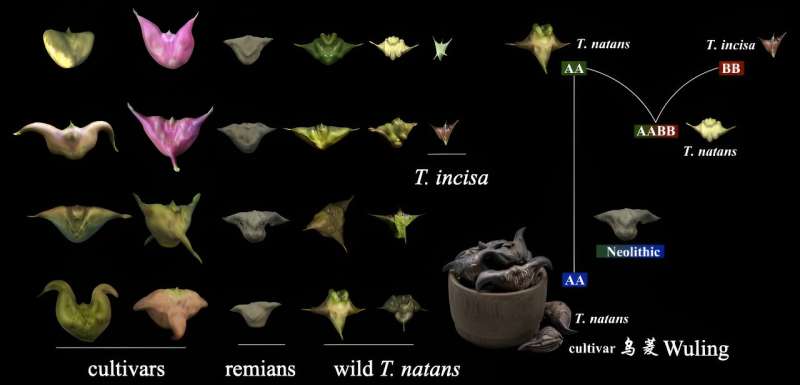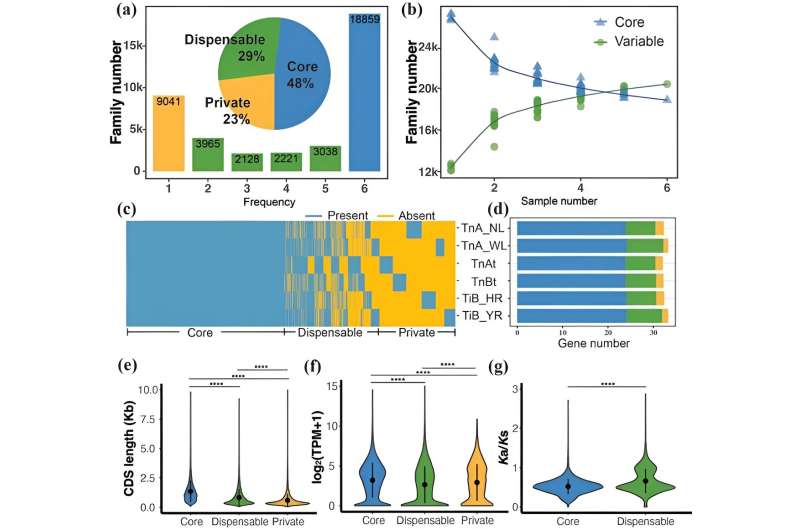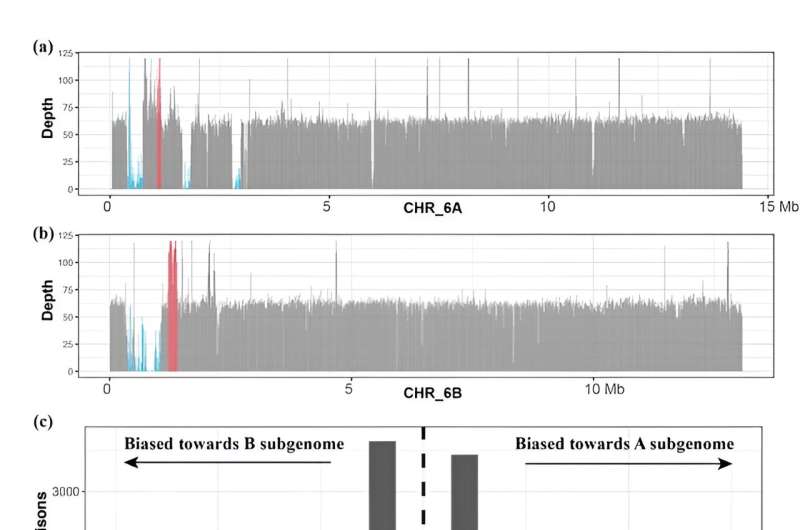This article has been reviewed according to Science X's editorial process and policies. Editors have highlighted the following attributes while ensuring the content's credibility:
fact-checked
peer-reviewed publication
trusted source
proofread
Pangenomic study of water caltrop: Structural variations play a role in speciation and asymmetric subgenome evolution

Rice, maize, and wheat provide more than half of the calories consumed by humans. The decrease in crop diversity poses a significant risk to global food security. Therefore, the utilization of orphan crops has become an effective approach to address food security crises. Nevertheless, in the face of rapid urban and rural modernization and the intensification of agricultural practices, the availability of wild and cultivated orphan crops is dwindling, with a noticeable disparity in their collection, preservation, and application of modern breeding techniques.
Water caltrop (Trapa spp.) is a kind of typical orphan crop, which has been consciously collected and domesticated as early as the Neolithic period. During the Tang and Song Dynasties, after further artificial selection, more than 20 varieties, e.g. "Wuling," "Nanhuling," were cultivated.
With the development of genomic technologies, pangenome research has become an essential approach for comprehensively understanding the mechanisms underlying agronomic trait.
In October 2023, a research paper titled "Pangenome of water caltrop reveals structural variations and asymmetric subgenome divergence after allopolyploidization," was published in Horticulture Research by Dr. Yingxiong Qiu's research team from the Wuhan Botanical Garden, Chinese Academy of Sciences.
The annual herbaceous and aquatic genus Trapa L. (Lythraceae), has traditionally been divided into two species, i.e. T. natans L. with diploid (2n = 2x = 48, AA) and tetraploid (2n = 4x = 96, AABB) cytotypes, and diploid T. incisa Sieb. and Zucc. (2n = 2x = 48, BB). Cultivated water caltrop was derived from the diploid T. natans with larger fruit size.
In this study, the authors generated two chromosome-level genome assemblies of diploid T. natans and T. incisa. In conjunction with four previously published (sub)genomes of Trapa, a gene-based pangenome was constructed.
The results show that core, dispensable, and private gene clusters accounted for 48.05%, 28.92% and 23.03% of all gene clusters, respectively. To precisely identify the potential presence-absence variations (PAVs) that may contribute to reproductive isolation and phenotypic divergence between T. incisa and diploid T. natans, the authors also constructed a graph-based pangenome based on 211,598 non-redundant PAVs among the six (sub)genomes.
A total of 40,453 PAVs were found completely differentiated between A- and B-lineages, involving 2,570 genes.

Gene ontology enrichment analysis showed that these genes were mainly enriched in organ development process, organic substance metabolic process and response to stimulus. Transcriptomic analysis further revealed that most of those genes were differentially expressed between T. incisa and diploid T. natans, indicating these genes likely play a crucial role in phenotypic differentiation and reproductive isolation between the two diploid species.
Based on comparative genome analysis and pan transposable element (TE) analyses, the authors found that allotetraploid T. natans underwent asymmetric subgenome divergence, with the B-subgenome being more dominant than the A-subgenome.

Multiple factors, including PAVs, asymmetrical amplification of TEs, homeologous exchanges (HEs), and homeolog expression divergence, together affected genome evolution after polyploidization.
In conclusion, the pangenome of Trapa affords a platform for a thorough exploration of genomic variation of Trapa species, thereby promoting a better understanding of the evolutionary and functional genomics of this currently underutilized crop variation.
More information: Xinyi Zhang et al, Pangenome of water caltrop reveals structural variations and asymmetric subgenome divergence after allopolyploidization, Horticulture Research (2023). DOI: 10.1093/hr/uhad203
Journal information: Horticulture Research
Provided by NanJing Agricultural University




















